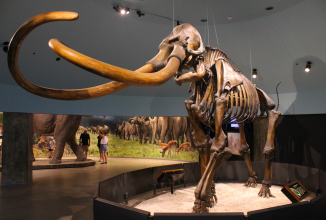
By: Mia Bordwin
Throughout time, scientists have tried to trace back early species. When scientists finally decide on a timeframe of when these species were alive, they find new evidence that shows they existed well before. This is the case for the extinction of wooly mammoths and wooly rhinos. Recently, paleontologists discovered ancient DNA that shows their past conclusions may be incorrect. Back in 2021, sediment samples were observed. These sediments came from the Arctic, and spanned the last 50,000 years. The conclusion from this evidence was that “mammoths survived in north-central Siberia as late as about 3,900 years ago.” Immediately, scientists were shocked. Up until that point, scientists were basing their conclusions on a mammoth fossil found in Eurasia that proposed their extinction was 10,700 years ago. Likewise, new evidence suggests that horses in Alaska also “remained thousands of years longer in some areas than…[they]… thought.”
However, these bones can only last thousands of years before being weathered down in the cold climate. This poses a major issue to scientists because the DNA and evidence they are recently finding could be coming from old bones, not recently living mammoths. Specifically, scientists look at eDNA which “gloms onto minerals and other material and gets buried over time.” Today, it is still a mystery as to how mammoths died out. If scientists could figure out the range of time that they actually became extinct, they might be able to solve that mystery. They have also looked at using radiocarbon dating to find answers. The researchers to study this included “evolutionary geneticist Yucheng Wang of the University of Cambridge and his colleagues.” Other scientists have looked into their research and drawn their own conclusions, so the truth and impact of this finding is still too early to tell.